SME Finance Policy Guide
SME Finance Policy Guide
SME Finance Policy Guide
You also want an ePaper? Increase the reach of your titles
YUMPU automatically turns print PDFs into web optimized ePapers that Google loves.
G-20 <strong>SME</strong> FINANCE POLICY GUIDE<br />
27<br />
Figure 2 Mismatch Between Firm Assets and Collateral Requirements:<br />
By composition of assets held<br />
by firm<br />
By composition of assets banks accept<br />
as collateral<br />
Machinery<br />
Land and<br />
Buildings<br />
Machinery<br />
Accounts<br />
Receivable<br />
Accounts<br />
Receivable<br />
Land and<br />
Buildings<br />
Source: World Bank Group Enterprise Surveys, average from 60 countries.<br />
• Creating unitary legal systems vs. fragmented laws. Creating or<br />
drafting a stand-alone law to regulate all aspects of<br />
security interests in movable property (secured transactions<br />
or personal property law) is considerably more<br />
efficient and creates less conflicts and uncertainty than<br />
revising existing provisions in multiple laws (commercial<br />
code, civil code, chattel mortgage law, etc.).<br />
• Establishing a broad scope of secured transactions law. This can<br />
be accomplished by:<br />
• Allowing all types of assets (both tangible and<br />
intangible, present and future) to be used as collateral<br />
for loans;<br />
• Allowing broad pools of assets (revolving assets)<br />
with a generic description of the assets to be<br />
accepted as collateral to facilitate the use of credit<br />
revolving facilities;<br />
• Adopting the “functional approach” to secured<br />
transactions, which should allow equal treatment<br />
to all transactions secured by movable property no<br />
matter what their contractual nature (financial<br />
leases, consignments, assignment of receivables,<br />
secured sales contracts, loans secured with movable<br />
property, retention of title, etc.) with regard to<br />
publicity and priority vis a vis third parties; and<br />
• Allowing the automatic extension of the security<br />
interests to products and proceeds of the collateral<br />
to protect the value of the security interest.<br />
• Simplifying the creation of security interests in movable property.<br />
This involves eliminating cumbersome and<br />
unnecessary formalities for the creation and enforceability<br />
of security interests in movable property.<br />
• Modernizing movable collateral registries. The collateral registry<br />
is the cornerstone of a functioning and efficient<br />
secured transactions system. The registry fulfills an<br />
essential function of the system, which is to notify<br />
parties about the existence of a security interest in<br />
movable property (existing liens) and to establish the<br />
priority of creditors vis a vis third parties. Best practice<br />
elements of a modern collateral registry include:<br />
• Single data source (centralized) registry for all<br />
security interests, including non-consensual liens;<br />
• Web-based electronic system accessible 24/7;<br />
• Notice-based system, meaning that only information<br />
about the creditor, the debtor (who can be<br />
both a legal or natural person), the collateral, and<br />
the amount of the obligation/loan needs to be<br />
entered, without the need of any documentation<br />
sustaining that information;<br />
• Registrations to be done by creditors or their legal<br />
representatives directly into the system;<br />
• Information available to the general public for<br />
searches;<br />
• Search criteria that includes, at least, debtor identifier<br />
and serial numbered collateral;



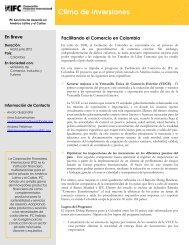
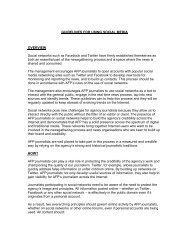
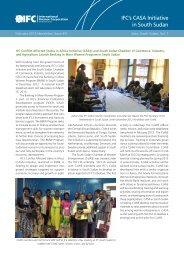

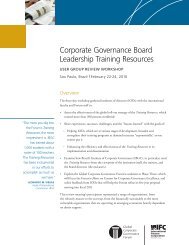




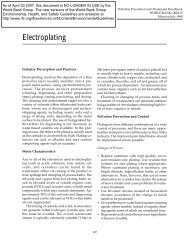

![Print a two-page fact sheet on this project [PDF] - IFC](https://img.yumpu.com/43449799/1/190x245/print-a-two-page-fact-sheet-on-this-project-pdf-ifc.jpg?quality=85)


